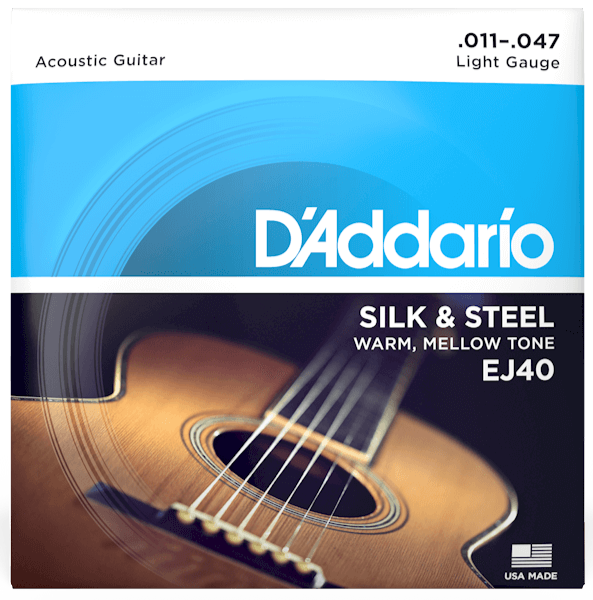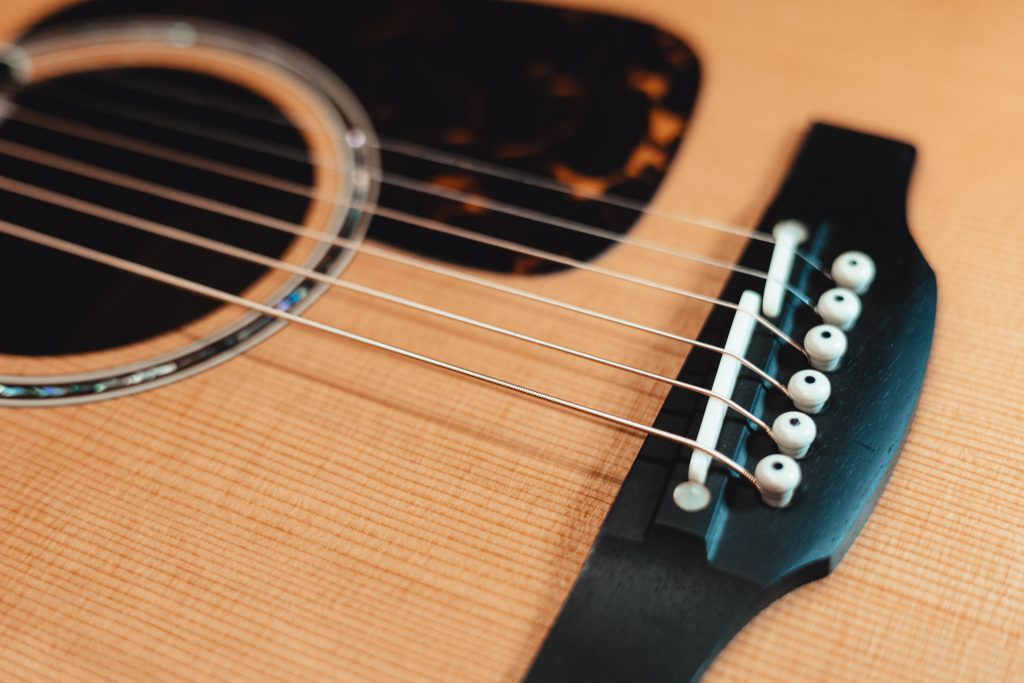A couple of years ago I transitioned my beloved Takamine CP7MO-TT from light to custom light strings, mostly to make it easier to play as it aged. One side effect of the lighter gauge strings on this guitar has been a slight brightening of the tone and a loss of some bass. Acoustically, this has not been an issue for me, as OMs are supposed to have a chime and shimmer. Plugged in on the other hand… you see, I have never loved the sound of this guitar plugged in – there is something about the wood/pickup/preamp combination on this guitar that gives it a really bright sound, verging on harsh. I find myself constantly cutting the treble on my preamp or amp, and have been tempted to extract the line driver preamp in order to do the same. This however, is easier said than done, as there is not enough slack in the internal cabling connecting the battery to the preamp to fully remove the preamp without undoing some of the metal cable clips inside the guitar. Perhaps one day, but for now enter D’Addario Silk & Steel strings:
According to D’Addario these are “uniquely designed to be (their) warmest, mellowest acoustic guitar string” and feature silver plated copper windings over a combination silk and steel core. Having started out on classical guitar, these struck me as basically a hybrid between steel and nylon strings, so I thought I would give them a go. A couple of days later I had some in hand:


My initial impression of these strings was that they feel very much like classical guitar strings, with the obvious exception of the plain steel 1st and 2nd strings. The wound strings both look and feel very much like nylon strings, of which I have changed hundreds of sets in the course of restringing my father’s guitars. They are very flexible and the windings have a completely different texture to that of typical steel guitar strings. They are available in only one gauge, light, in both six and twelve string sets. No coated version of these strings is available at time of writing.
Installation of the strings was straightforward and actually a little easier than I was accustomed to, due to the lower tension of the strings themselves. Tuning them up for the first time I had to be careful to check my pitch constantly to avoid over-tensioning the strings: reviews I had read online had indicated that these strings are prone to breakage if tuned higher than standard, especially that .011 high E string. I found that they did need more finesse as they approached target pitch, tending to go flat much in the same way as classical guitar strings do. I have found that in use these do not hold their tuning as well as normal steel strings, tending to go flat between sessions when the guitar is put away. They are however, quite stable when the guitar is actually being played.
And what about the sound? Here’s a before and after video that shows the change in tone, recorded both direct and with a microphone:
I was actually quite surprised: although these strings feel like classical guitar strings, they sound very much like steel strings! Especially when strumming with a pick, they have almost as much top end as the set they replaced. Granted, we are comparing brand new uncoated strings to three-month old coated strings, but still, the difference is much less, in my opinion, than D’Addario’s marketing copy would make it out to be. To summarise:
Likes:
- Lower tension makes guitar easier to play, especially when it comes to barre and complex chords. One problem solved!
- Sound is, in my opinion, almost as bright as the phosphor bronze set the replaced.
- Lower tension has actually made the action on the guitar come down slightly!
- Strings work well with the guitar’s pickup/preamp system – output is balanced across the six strings, without any significant loss of level.
- The silver color of the windings makes them immediately distinguishable from a normal phosphor bronze set.
Dislikes:
- The low A, and especially the low E string, have a somewhat ‘rubbery’ sound to them – I know that word describes a texture and not a tonality, but I don’t have a better adjective for this. It’s almost as though the hybrid nylon/steel construction has a disproportionately greater effect on the tone of these two strings than on the others. Other words that could be possibly be used are ‘thwacky’ or ‘boingy’…
- The strings seem rather ‘dirty’ – wiping with a clean cloth produced many black streaks, even when the strings were brand new. Perhaps this is leftover from the manufacturing process?
At time of writing the strings have been on the guitar for ten days or so and are performing well. The guitar is much easier to play than with a normal (12-53) set of light gauge phosphor bronze strings, and the sound is eminently suited to fingerstyle playing. I have found that using a pick one gauge lighter than usual (in my case, 0.53mm instead of 0.67mm) to be helpful in preventing over-strumming of the strings.
In conclusion, I would say definitely give these a try if you have a guitar that seems hard to play, overly bright sounding, or just for a change of scene. They are reasonably priced for what they are, and seem to be made with D’Addario’s usual care and attention to detail.
Click here to buy these strings on Amazon (affiliate link, supports my work).


